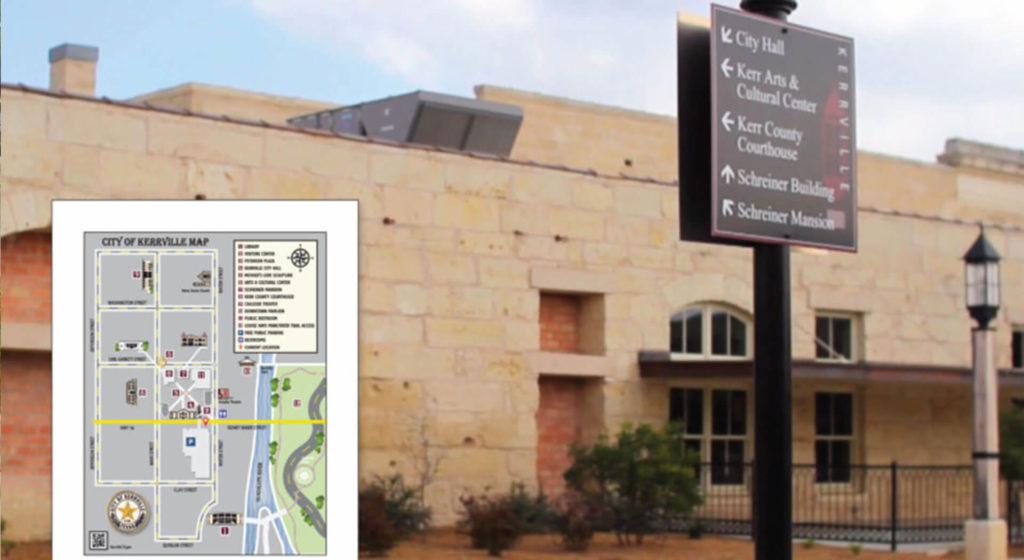Time Saving Tips for Civic Wayfinding and Placemaking Project Schedules

A robust civic wayfinding and placemaking system can accelerate economic development for your community by orienting residents and visitors and driving them into your commercial core.
City planners often think that wayfinding and placemaking projects are expensive investments with never-ending timelines – and, to be fair, they are a major undertaking. But there are ways to streamline your civic wayfinding project schedule.
First, What’s a Civic Wayfinding and Placemaking System?
When most cities hear “wayfinding”, they think directional signage. However, directional signage is only one piece of moving people to your end goal.
A robust civic wayfinding and placemaking system orients and motivates residents and visitors by leveraging thoughtfully-placed and beautifully-designed directional signage, gateways and entrances, public art pieces, pedestrian maps and kiosks, and other civic features.
How to Keep Your Wayfinding Project on Schedule.
Time is money, right? The more time your wayfinding project spends in limbo, the more money it costs your city – and the more of a liability it becomes to you. Here are a few ways to streamline your civic wayfinding project schedule.
1. Select a Single Partner with Design/Build Capability.
A piecemeal approach with multiple vendors can be costly and time consuming. More RFPs. More contracts. More project plans. Plus, the handoff from one vendor to the next often impacts the project timeline due to design flaws, misguided fabrication requirements, and more.
A design/build approach supports you throughout the entirety of the wayfinding project lifecycle – from route mapping and sign design to fabrication and installation. When the project is done, your city has an actual wayfinding and placemaking system and not just a plan for one.
Kerrville, Texas, benefited from a design/build approach to implement a downtown wayfinding project in less than one year! View the case study video below.
2. Engage Your Stakeholders Early in the Project.
Wayfinding and placemaking projects rarely involve a single stakeholder group. Your project will require input and buy-in from a coalition of participants – from municipal departments like public transportation and parks and recreation to the local business community. Engage them early!
Involving stakeholders early in the timeline creates project continuity and eliminates the need to sell the benefits of wayfinding and placemaking down the road. Build a solid group of stakeholders during the initial planning stages of your project in order to eliminate delays and setbacks.
3. Leverage Your Existing Civic Branding Investments.
Don’t try to tackle civic branding and wayfinding in the same project. Wayfinding and placemaking are natural extensions of your existing civic brand. They’re not a cause to reinvent the wheel in a costly and time-consuming branding exercise.
By linking to and building upon existing brand assets and resources, you’ll streamline your project timeline and gain a wayfinding and placemaking system that complements, not alters, your brand.
Are You Scheduling a Wayfinding Project?
We can keep your civic wayfinding project on schedule. Let’s discuss your wayfinding and placemaking project!